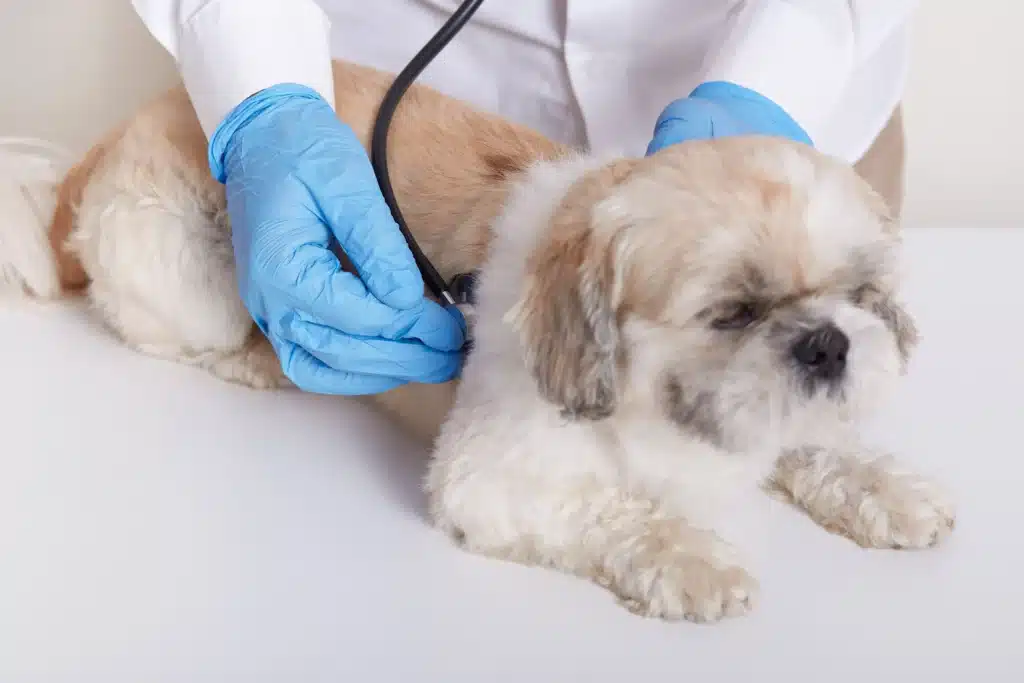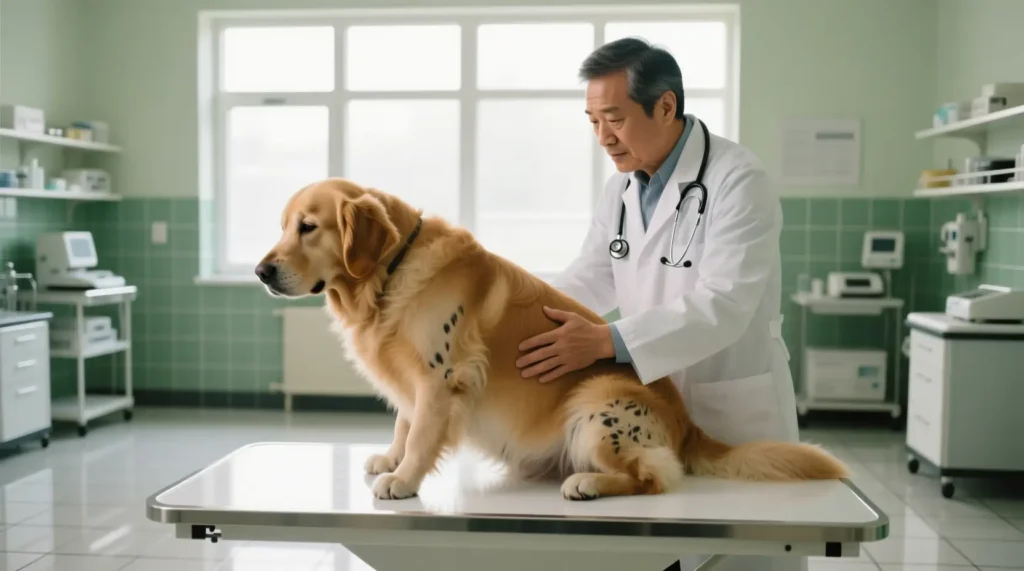A Complete Guide for Pet Owners and Industry Professionals
When you pick up a bag of dog food or cat food, you might see phrases like “Complete and Balanced Nutrition” or “Meets AAFCO Nutrient Profiles.” To you, it may just seem like marketing nonsense, but it means much more than that. It refers to the Association of American Feed Control Officials (AAFCO), an organisation that has a significant impact on the sale of more than enough bowls of kibble or wet food in the U.S.A. and, by extension, the global pet food market.
So just what is AAFCO? Is it a government regulator? Does it approve dog food or cat food? And what does it say about what you, as a pet owner, should feed your pet?
This blog will look beyond the usual external overviews, and by the end, you will know what AAFCO is, how it influences the pet food industry, what it lacks, and how to use its standards to make better decisions for your pet.
What Is AAFCO?
The Association of American Feed Control Officials (AAFCO) is a nonprofit, voluntary membership organisation that was formed in 1909 and has spent more than a century providing (and controlling) direction on how pet food is defined, labelled, and regulated in the United States.
Who is AAFCO?
AAFCO is not a private company, and it is not a brand that consumers would recognise. It is a non-profit, member association made up of representatives from state and federal agencies as well as scientists. AAFCO is focused on developing uniform laws, definitions, and nutritional standards for animal feed and pet food and not producing, marketing or selling products to consumers.
Who makes up AAFCO?
People who regulate animal feed and pet food in their state.
Federal government agencies, including the U.S. Food and Drug Administration (FDA) and the U.S. Department of Agriculture (USDA).
Veterinarians, animal nutritionists, and scientists who know about health, safety, and dietary needs.
This combination is valuable, as it ensures scientific knowledge and regulatory authority follow the standards established by AAFCO.
The Mission of AAFCO
According to AAFCO’s mission statement, AAFCO’s mission is:
“To provide a forum for the development of uniform and equitable laws, regulations, standards, definitions and enforcement policies for regulating the manufacture, distribution and sale of animal feeds and pet foods (AAFCO, 2024).
In other words, AAFCO’s charge is to set regulations and definitions so that things mean the same across states. This eliminates uncertainty in the marketplace, allowing pet food companies to trade across state borders and allowing consumers to feel more confident.
What prompted the creation of AAFCO?
Before AAFCO, every state had its own definitions and requirements for what constituted animal feeds. This led to problems:
A food that was legal in one state could be banned in another.
Companies had difficulty selling animal feeds across state lines due to conflicting regulations.
Consumers had little protection from unscrupulous or vague labelling.
AAFCO was created to solve these issues by producing model bills and model regulations for the states to adopt. Now, almost every U.S. state has adopted and uses AAFCO’s standards in some way, providing pet owners.
What AAFCO Does?
AAFCO influences the pet food industry by establishing defined ingredient definitions, nutritional adequacy criteria, labelling requirements, and feeding trial protocols. This standardisation establishes consistency, safety, and accountability between manufacturers and consumers, enabling them to meet specific criteria while also providing consumers with a standard set of information to make informed decisions about their pet’s diet and overall health. Let’s break it down:
1. Ingredient Definitions
When you see “chicken meal” or “chicken by-product” on a label, these words have meaning and a legal definition courtesy of AAFCO.
For example:
“Chicken” means the clean flesh of a chicken, meaning only edible muscle tissue.
“Chicken by-product meal” means the remaining parts from the chicken (organ meats, etc.) that are nutritious for your dog, whereas the meal does not include chicken feathers or wastes.
The definitions are meant to help clarify the ingredient and not allow the manufacturer to mislead you, and without AAFCO, the manufacturer could label almost anything as “meat.” Across the country, there is at least a baseline of consistency.
2. Nutritional Adequacy Standards (Nutrient Profiles).
AAFCO publishes and maintains Dog and Cat Food Nutrient Profiles. These profiles set forth the minimum (and sometimes maximum) levels of essential nutrients that a complete or balanced dog or cat food should contain. These include:
Proteins and amino acids
Fats and fatty acids
Vitamins (A, D, E, B-complex, etc.)
Minerals (calcium, phosphorus, magnesium, etc.)
To claim “Complete and Balanced,” the pet food must satisfy the Nutritional Adequacy standards in one of two ways:
Formulation Method
Experimental analyses examine if the formulation of pet food meets the nutrient levels defined by AAFCO. This method is both mathematical and scientific, demonstrating that essential vitamins, minerals, proteins, and fats are present in sufficient amounts before the food can be offered for sale as “complete and balanced.
Feeding Studies
The food is fed to real animals, under strict AAFCO protocols, to prove it supports animal health during a trial feeding.
Because AAFCO has built the two methods to ensure that pet food provides adequate nutrition, and not just calories, we should expect that their employees would be addressing new methods to demonstrate “Complete and Balanced” in the future as nutrition research continues to evolve.
3. Model Regulations for Labelling

AAFCO provides a specific regulation for pet food labels addressing:
Product name (in which “Dinner,” “With,” and “100%” have specific rules).
Intended species (e.g., dog, cat).
Net quantity statement (how much food is in there).
Guaranteed analysis (minimum protein, fat, and maximum fibre, moisture).
Ingredient statement in descending order by weight.
Nutritional adequacy statement (e.g. “This food is formulated to meet the nutritional levels established by AAFCO…”).
Feeding directions.
Manufacturer/distributor contact information.
These regulations are designed to provide enough information for pet owners to meaningfully compare products and help eliminate false, misleading claims.
4. Feeding Trial Protocols
AAFCO develops feeding trial protocols that companies must follow if they want to claim nutrient adequacy by testing and not formulation. These protocols stipulate: the number and kind of animals that will be tested, the length of the study, and health monitoring parameters (weight, blood work, general condition). Feeding trials give the added framework of use that lab numbers alone cannot support.
5. Official Publication
Each year, AAFCO publishes its Official Publication (OP): a large document that contains ingredient definitions, model regulations, nutrient profiles, and laboratory methods, and comes to be used as “the rule book” for state regulators and pet food manufacturers’ compliance.
6. Consumer Education
Beyond their work with the industry, AAFCO is also a resource for consumers. Their website contains information about how to read pet food labels, what the definitions of “complete and balanced” food mean, and how definitions of ingredients work.
This honesty provides assurance for pet owners as to what they are feeding their pets based on regulatory science.
What AAFCO Is Not?
There are various misconceptions related to AAFCO. Here’s what it doesn’t do:
AAFCO has no regulations or enforcement of laws.
The implementation is left to respective states and federal regulatory bodies, such as the FDA.
AAFCO is not the one that approves or certifies pet food.
Blogs may have AAFCO-approved posts, which is not true. The self-certification of meeting AAFCO is done by companies, and regulators can check that.
There is no inspection of facilities or product testing at AAFCO.
Compliance is the role of the manufacturers. Inspections and testing are done by the states and the FDA.
AAFCO lacks the definition of marketing terms.
Such terms as premium, holistic, or natural do not have any rigid definitions in AAFCO, and the marketing spin can be used.
Why does AAFCO have Importance to Pet Owners?
All this technical talk, ultimately, to the common dog or cat owner, is reduced to this one important point: AAFCO can help you understand whether a food is complete nutrition.
Here’s how:
When the label states that the product is made to the nutrition levels set by AAFCO, it means that the formula underwent lab analysis in comparison with nutrient levels.
When the label indicates that the food was tested against animals using AAFCO procedures, then it was tested on real animals.
When the product is incomplete (such as treats or toppers), the label should state that the product is only to be used as an intermittent or supplemental food.
The knowledge of these differences can be used to prevent feeding a diet that would cause your pet to lack important nutrients.
Real-World Examples
The dog food nutrient profiles were updated in 2016 to capture the current scientific knowledge.
The nutrient profiles of cat food have higher requirements compared to those of taurine, which is an amino acid that is fundamental to the health of the heart as well as the eyes of cats.
Violations of pet food standards are usually followed by recalls or reformulations.
All these examples demonstrate that AAFCO can be found in the laboratory, down to the dinner bowl of your pet.
Disadvantages and Weaknesses of AAFCO
While AAFCO provides important information for pet nutrition, it’s not perfect. Critics have pointed to inconsistent adoption from state to state, overreliance on formulation as opposed to feeding trials, vague detail in marketing terms, as well as a lack of focus on pet welfare or corporate accountability outside of its regulatory frameworks.
Variability across States
Since adopting AAFCO standards is voluntary, enforcement can be inconsistent. Each state chooses how much of AAFCO’s model regulations to incorporate. States may leave some model standards out, thereby leaving gaps in oversight. Different states can apply different levels of enforcement and different degrees of variability implementing pet food safety and labeling laws throughout the United States.
What is strictly enforced in one state can be loosely enforced in another state?
Comparison of Feeding Trials and Formulation
They are more convincing when it comes to adequacy because feeding trials are costly. Most of the companies merely depend on making the formulation, which may not depict actual digestion and absorption in pets.
Weak Supervision of Marketing Statements
Words such as human-grade or holistic lack proper definitions and leave consumers in a position where they are exposed to misleading advertisements.
Not a Consumer Advocacy Group
How to Use AAFCO Standards as a Pet Owner?
Thus, it’s likely that even if you are in Europe, Asia, etc., your pet’s food was formulated based on AAFCO standards.
Assessing pet food, consider this handy checklist:
Look for the nutritional adequacy statement.
See if the food is labelled for your pet’s life stage (growth, reproduction, adult maintenance).
Prefer foods that have conducted feeding trials wherever possible.
Avoid vague marketing language such as “natural” or “premium.”
If feeding treats, ensure your pet’s primary diet is “complete and balanced.”
By following AAFCO guidelines, you are much less likely to be duped into purchasing poor-quality or nutritionally lacking foods. Advocates desire that it have a more enforcing component

Limitations of AAFCO’s Focus
A significant criticism of AAFCO is that its overall mission is not to protect pets or hold companies accountable; it focuses on regulatory harmonisation. AAFCO is about consistency among the states and not a consumer protection agency nor an agency to hold manufacturers to account.
In laying out standards and creating a consistent picture of what information manufacturers should provide, AAFCO does a much better job than previously. AAFCO can provide standards for baseline nutrition and transparency in pet foods, while some are concerned that it might leave some gaps, making sure we have the highest welfare standards for pets. For example, the pet parent cannot take it for granted that “AAFCO-compliance” means it is necessarily of a higher quality.
The Global Reach of AAFCO
Because AAFCO is a U.S. organisation, it is easy to overlook its impact on a global basis. Nevertheless, many international pet food manufacturers use AAFCO nutrient profiles in the formulation of their products to access the growing U.S. market.
Thus, there is a high probability that even if you live in Europe, Asia, or even other parts of the world, your pet’s food was developed with AAFCO in mind. This indicates that AAFCO is not just an influence in the U.S., but a reference point in pet nutrition.
The Future of AAFCO
As science changes, so too does AAFCO. Future changes may include:
Better definitions for buzzwords like “raw,” “grain-free,” or “human-grade.”
Stronger oversight of claims made about sustainability or trending health claims.
More up-to-date nutrient profiles for the continuing research in pet health.
Conclusion
AAFC is unlikely to show up on your pet food bag in bold text, but it certainly leaves its fingerprints all over it. It establishes everything from ingredient definitions to nutrient requirements in dog food and cat food, from labelling requirements to feeding trials. AAFCO is what makes sure that what we put in your pet’s bowl is nutritionally adequate. It is not a regulator, it is not a watchdog, and it is not a stamp of approval. AAFCO is a guiding document that states and companies use to create consistency and equality in the messy world of pet nutrition.
For pet owners, it is most important to be educated about AAFCO; what it does and does not do, and to understand that while the nutritional adequacy statement is important, you need to pay attention to whether your food meets the AAFCO standard by feeding trials or formulation, and that marketing buzzwords are sometimes more than AAFCO. At the end of the day, you are better equipped to make better, safer, and more informed diet decisions for your animals, knowing about AAFCO.


